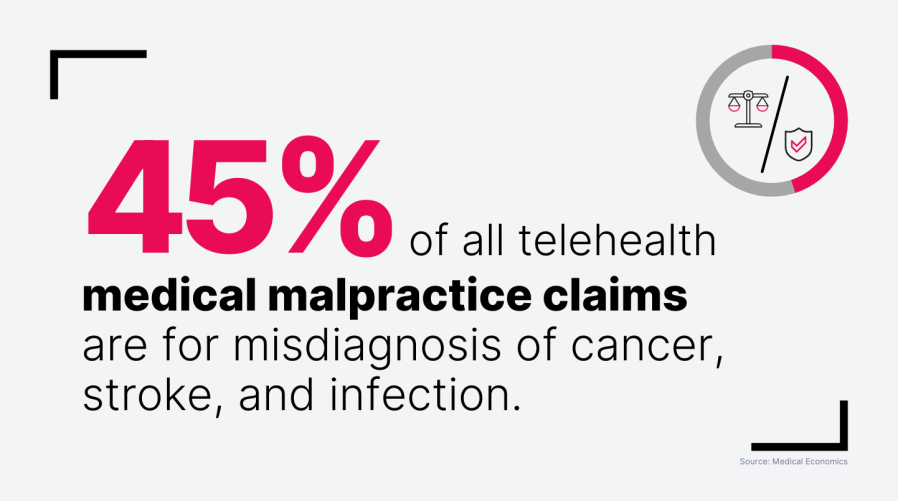Telemedicine Malpractice Laws: Navigating Legal Challenges in Virtual Healthcare

Telemedicine Malpractice Laws: Navigating Legal Challenges in Virtual Healthcare
Telemedicine has revolutionized the healthcare landscape, offering convenient access to medical services through virtual platforms. However, as the popularity of telemedicine grows, so does the need for a robust legal framework to address potential malpractice issues. In this article, we’ll explore the evolving landscape of telemedicine malpractice laws and the challenges healthcare providers face in this dynamic environment.
The Rise of Telemedicine: A Paradigm Shift in Healthcare
The advent of telemedicine has brought about significant changes in the delivery of healthcare services. Patients now have the ability to consult with healthcare professionals from the comfort of their homes, eliminating the need for physical visits to medical facilities. While this has undoubtedly increased accessibility, it has also raised questions about the adequacy of existing legal frameworks in addressing malpractice concerns in virtual healthcare settings.
Understanding Telemedicine Malpractice Laws
Telemedicine malpractice laws encompass a range of legal considerations specific to virtual healthcare interactions. These laws address issues such as improper diagnoses, prescription errors, and breaches of patient confidentiality in the virtual realm. Healthcare providers must familiarize themselves with these laws to ensure they deliver quality care while adhering to legal standards.
Challenges in Establishing Standardized Regulations
One of the significant challenges in telemedicine malpractice law is the lack of standardized regulations across jurisdictions. As telemedicine transcends geographical boundaries, legal frameworks vary, leading to potential inconsistencies and ambiguities. Healthcare professionals navigating these complexities must stay informed about the specific regulations governing their practice to mitigate legal risks.
Risk Mitigation Strategies for Healthcare Providers
To navigate the intricate landscape of telemedicine malpractice laws, healthcare providers must implement robust risk mitigation strategies. This includes comprehensive training for telehealth practitioners, incorporating technological safeguards to protect patient data, and maintaining clear communication with patients regarding the limitations of virtual consultations.
The Role of Informed Consent in Telemedicine
Informed consent plays a pivotal role in telemedicine malpractice cases. Clear communication about the scope and limitations of virtual healthcare services is essential. Healthcare providers should ensure that patients fully understand the potential risks associated with telemedicine consultations and obtain explicit consent before initiating virtual care.
Telemedicine Malpractice Case Studies
Examining real-life case studies can provide valuable insights into the complexities of telemedicine malpractice. These cases shed light on scenarios where legal challenges emerged and the subsequent implications for healthcare providers. Learning from past experiences can help practitioners proactively address potential issues in their own telemedicine practices.
The Evolving Landscape of Digital Health Technologies
As telemedicine continues to evolve, so do digital health technologies. From AI-driven diagnostics to remote monitoring devices, the integration of innovative technologies introduces new legal considerations. Staying abreast of these advancements and understanding their implications is crucial for healthcare providers practicing in the telemedicine space.
International Perspectives on Telemedicine Malpractice Laws
Given the global nature of telemedicine, healthcare providers must also consider international perspectives on malpractice laws. Variances in legal frameworks and cultural nuances may impact the delivery of virtual healthcare services. Seeking legal counsel with expertise in international healthcare law is advisable for those practicing telemedicine across borders.
Conclusion: Balancing Innovation and Legal Compliance
In conclusion, the rise of telemedicine brings forth both innovative solutions and legal challenges. Healthcare providers must proactively engage with the evolving landscape of telemedicine malpractice laws to strike a balance between providing accessible healthcare services and ensuring legal compliance. By staying informed, implementing risk mitigation strategies, and adapting to changing regulations, practitioners can navigate the complexities of virtual healthcare responsibly.
To learn more about specific telemedicine malpractice laws, visit Telemedicine Malpractice Laws.




